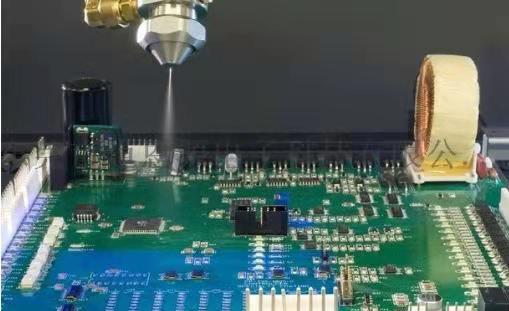For many electronics engineers, maybe, they are quite professional in designing their PCB boards, and they also know exactly what kind of working environment their PCB will be applied in, but they have no idea how to protect their circuit boards and components and extend their service life. That’s the conformal coating for.
What is conformal coating?
A conformal coating is a thin polymeric film applied to a printed circuit board (PCB) in order to protect the board and its components from the environment and corrosion. The film is typically applied at 25- 250µm and ‘conforms’ to the shape of the board and its components, covering and protecting solder joints, the leads of electronic components, exposed traces, and other metallised areas from corrosion, ultimately extending the working life of the PCB.
Why do you need a conformal coating?
A newly manufactured printed circuit board will generally perform well, but performance can quickly deteriorate due to external factors in its operating environment. Conformal coatings can be used in a wide range of environments to protect printed circuit boards from moisture, salt spray, chemicals and temperature extremes in order to prevent such things as corrosion, mould growth and electrical failures. The protection provided by conformal coatings allows for higher voltage gradients and closer track spacing, in turn enabling designers to meet the demands of miniaturisation and reliability.
1. Insulating properties allow a reduction in PCB conductor spacing of over 80%
2. Can help eliminate the need for complex, sophisticated enclosures.
3. Light weight.
4. Completely protect the assembly against chemical and corrosive attack.
5. Eliminate potential performance degradation due to environmental hazards.
6. Minimize environmental stress on a PCB assembly.
Ideally, conformal coatings should exhibit the following characteristics:
1. Simple application.
2. Easy removal, repair and replacement.
3. High flexibility.
4. Protection against thermal and mechanical shock.
5.Protection against environmental hazards including: moisture, chemicals and other corrosive elements.
How do you apply Conformal Coating?
Four main ways of applying a conformal coating:
1. Dipping –limited to materials that do not cure quickly by moisture, oxidation or light.
2. Selective robotic coating –such as Asymtek, PVA or DIMA. All coating types can be used if the correct dispense head is selected.
3. Spraying –hand spray using a spray booth or aerosol can. All coatings can be applied in this way.
4. Brushing –requires extremely proficient and skilled operators in order to be suitable for production purposes.
Finally you will have to consider the curing method determined by the coating selected, air dry, oven dry or UV light cure. The liquid coating should thoroughly wet all surfaces and cure without leaving surface defects. Epoxies are especially sensitive to surface defects. Epoxies can also shrink while setting and may lose adhesion as a result In addition; excessive shrinking during cure can place severe mechanical stresses upon circuit components.
If you want to learn more about conformal coating, PHILIFAST will give you a guide you about it. PHILIFAST pay attention to each single details to provide you PCB boards with high service life by protecting each important part whatever components and circuit.
Post time: Jun-22-2021





